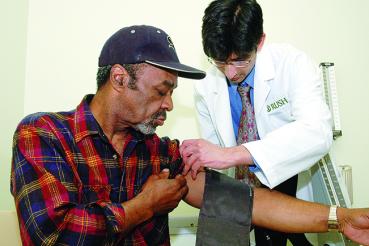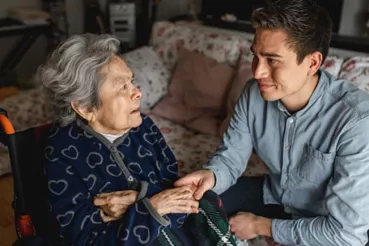Driving isn't just convenient. For many people, it's an important a sign of independence. But a range of health conditions can make driving so dangerous that the risks begin to outweigh the benefits.
Some of these conditions, like seizures or the side effects of medication, may improve with time or treatment. Others, like dementia or worsening eyesight, probably won't.
Many conditions in both categories are more common in older adults. But that doesn't mean that people have to stop driving just because they're getting older. "A person in their 70s can be in great shape and have fewer medical issues than someone in their 40s," says Reena Navuluri, MD, a specialist in family medicine and geriatric medicine at Rush Oak Park Hospital. "We don't say, 'Oh, you've reached this age, you have to stop driving.' We look at the warning signs, regardless of age."
Looking out for these signs — and talking about them with your loved one — can make life better and safer for them, their passengers and everyone they share the road with.
Watch for warning signs of unsafe driving
Some of most common causes of unsafe driving include problems with eyesight, cognition (thinking) or ability to move around. Together or alone, these issues can lead to difficulties such as the following:
- Responding too slowly to unexpected situations when driving
- Wandering out of the lane
- Running stop signs
- Getting lost in familiar places
Sometimes these issues are frequent and obvious. But they can also be subtle, especially at first.
Start the conversation early
If you notice a loved one having symptoms that seem to prevent them from driving safely, bring it up as early as you can. "If possible, talk about giving up driving long before it becomes a problem," Navuluri says. "Preparing loved ones well in advance can help them come to terms faster."
She recommends using minor fender benders or health changes as conversation starters. You could say something like, "There might come a time where you have to give up your keys because of all these changes." Or, "No one was hurt, but we want to make sure that you don't have more serious accidents down the road."
Find — and address — the underlying problem
Of course, not all small problems lead to larger problems. Another good early step is asking your loved one to see a primary care doctor, who can do a driving evaluation. (You can even offer to go along.) The evaluation may uncover ways to address the problem that don’t involve giving up driving.
For example, while confusion and slow reaction times are sometimes symptoms of dementia, they can also be side effects of medications. Common culprits include anti-anxiety drugs, antidepressants, narcotic pain relievers and even antihistamines such as Benadryl.
Because older adults process medications more slowly, the side effects of these drugs hit them particularly hard. "Older adults shouldn't drive while taking these medications," Navuluri says. "But in some cases, they may be able to stop taking the medications and start driving again."
Similarly, for people who have difficulties with certain types of movement, adaptive equipment (such as changes to the steering wheel or adding a hand brake) can help them drive more safely. The driving rehabilitation program at Rush can recommend adaptations that might help.
Recognize difficulty, prioritize safety
Sometimes an evaluation will reveal that your loved one can no longer drive safely. If and when this happens, try be understanding. "I definitely take the time to acknowledge that this is a huge change," Navuluri says. "Losing your driving privileges can be depressing. It's important to talk about that and let people grieve the loss."
It's equally important to prioritize safety. If your loved one resists giving up driving, Navuluri recommends focusing on the risks. Bring up recent close calls, or share some statistics. For example, because they’re more prone to injury, people 70 and older have a higher chance of dying when they're in a car crash.
"Sometimes," Navuluri adds, "it also helps to point out that their inability to drive safely can lead to the loss of an innocent life, like a child or grandchild who might be in the car with them."
Find alternatives to driving (and maybe offer up a ride)
Another strategy that can smooth the transition is identifying other ways to get around. "The most ideal thing — if it's possible — is for family members or friends to provide rides," Navuluri says. Maybe you could take them to the grocery store once a week, for example. Or maybe a neighbor would be willing to let them tag along on shopping trips.
Other options include public transportation, cabs and ride sharing. For those in the Chicago area, social workers at Rush can help find ways to get to medical appointments or other destinations.
If the destination is close enough, Navuluri recommends walking, if possible. "Walking has the added benefit of getting them outside," she points out. "Plus, it's always good to get some fresh air."




